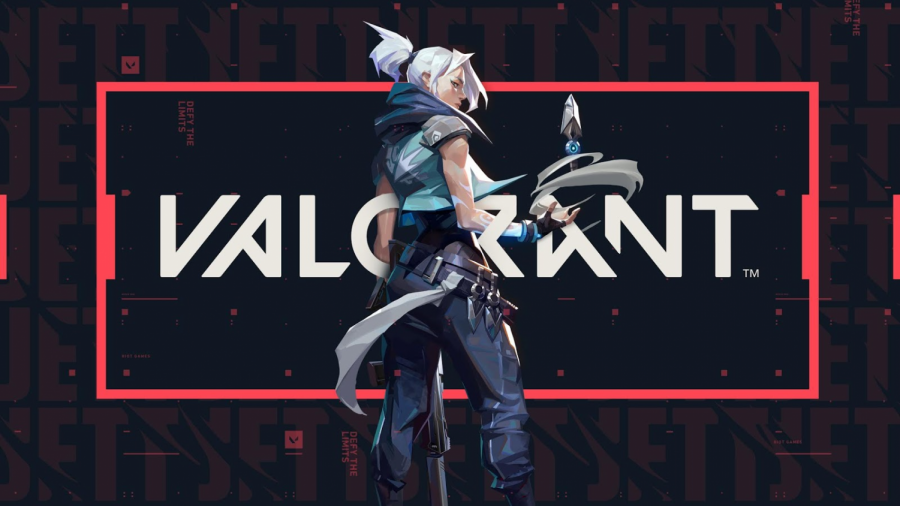Esports during the Epidemic
How the spread of Covid-19 has led to a spread in videogame popularity.
June 2, 2020
The NBA playoffs. MLB Opening Day. 2020 Tokyo Olympics. The Masters. March Madness. The list of cancelled or postponed sporting events due to COVID-19 is endless. Millions of people who normally would have watched these competitions have been left out to dry, starved of entertainment. What should all these fans turn to?
As of now, documentaries, such as Netflix’s “Tiger King” and ESPN’s “The Last Dance” have flourished, embedding themselves into modern culture. References to Carole Baskin permeate social media, music, and conversation. The first few episodes of “The Last Dance” have broken records for ESPN in viewership, and this is coming from the same company that has produced spectacular 30 for 30’s.
The problem with the surge in documentary viewership is that we, as viewers, already know the ending – Jordan leads the Bulls to victory in Game 6. The defining and compelling quality of athletics that mesmerize the audience, enthralling the die-hards and the casual fans, is the competition and the unpredictability. The best part about March Madness is Cinderella, not the chalk.
And to get their fix of spectacle, it seems that viewers have flooded over to the realm of esports. Video game streaming—through which professional gamers play in front of a live audience—has been occurring since the early 2010s. Although it had a large following, it was still a rather niche arena, with games such as Hearthstone and League of Legends hosting a large, yet static, fanbase, as gaming had yet to ascend into popular culture.
But videogames and streaming have recently begun to permeate the fabric of mainstream society. At its peak in 2018, Fortnite had 78.3 million players. It is rare to find a kid today who doesn’t know how to do a couple of emotes, or dances, from the game in real life.
Yet the effect of Fortnite in the gaming community cannot be understated. The game was able to reach all ages, from young kids playing their first video game to the veterans who have been gaming all their lives. Because of its ability to reach such a wide audience, Fortnite has operated as a sort of transitory game, paving the path for other games to receive the plays and viewership that it otherwise would never have had by growing the gaming community tremendously.
How was Fortnite able to attract this widespread audience? The seeds for the success for Fortnite were in its structure, taking a twist on the en vogue battle royal system, which means that many individual players duke it out until just one remains, by implementing new features like building and editing structures. The option to change or destroy parts of the playing field had virtually never been seen in competitive gaming, and Fortnite made that a central part of gameplay. This novel feature, combined with its free-to-play accessibility elevated it past other battle royale games like PlayersUnknown’s Battleground.
However, what really cemented its status as the transitory game was when massively popular Canadian rapper Drake and Pittsburgh Steelers wide receiver Juju Smith-Schuster streamed with Twitch streamer Ninja, and soon, Fortnite became the cool thing to do, and thus, people who had recently thought of gaming as “nerdy” became dedicated players.
Some of these new people inserted into the gaming community found themselves attracted to other things aside from the new fad of Fortnite. Players like Erik “omagic” Fendorf, a junior from Gunn High School, find joy not just in the competitiveness of the game, but in the actual online community in gaming.
“I like the camaraderie of gaming,” Fendorf said. “You get to spend time competing with your friends. I am a pretty competitive person and that combined with some natural gaming talent makes it really enjoyable.”
As more people entered the gaming community, they also migrated onto media platforms such as Twitch and Youtube for content related to gaming. Twitch is an interactive streaming website and has had a massive surge in popularity over the last 3 years. The site’s top streamers consist of insane competitive gamers and content creators. On Twitch, streamers like “Ninja” and “DrLupo” grew by 32 times and 53 times, respectively, due to the Fortnite surge.
However, Fortnite, like many games before it “died” so to speak, as people slowly stopped playing it, the game proving to be just a fad. New games emerged, but the mainstream popularity of gaming had still not been cemented.
The COVID-19 epidemic has led to a similar, but smaller scale effect on the gaming industry as the industry is insulated from social distancing guidelines, as most content creators wake up, go to their basements, and stream. Further, with the world stuck in the confines of their households with nothing specific to accomplish, popular involvement in gaming has risen. Paly Junior Isaac Wyant is an avid viewer of Twitch and has noticed a substantial increase of people online.
“Twitch viewership has increased because people are bored and have nothing better to do. They are stuck at home and default to watching popular content creators that interact with their communities” Wyant said.
With this extra time on their hands following the cancellation of school, and more potential viewers online, players like Fendorf have started to invest in building their own community on the platform.
“Before the quarantine started, I rarely streamed but since I have so much time on my hands, I have started to get into it more. My viewership has pretty much doubled so far and I hope to keep growing in the future”, Fendorf said.
ESPN and other members of the traditional sports scene have also tried to tap into this surge in video game viewership and playing during this pandemic. The media company hosted and streamed tournaments in Madden and NBA2K with professional sports players, games meant to simulate pro football and basketball, respectively. However, these events fell into a sort of limbo, half way between attracting the gaming community, and with the “regular” sports fans who have yet to come around to viewing esports as real sports.
Despite this initial attempt to connect to viewers during the pandemic from ESPN falling flat, Manchester City forward Sergio Aguero capitalized on the virus by starting his own Twitch channel under the name SLAKUN10, and quickly amassed over half a million followers.
As the twitch platform grows, integrating long time gamers and people new to the scene, pressure builds for streamers, as their fan base wants them to constantly be online. This is especially true for the larger streamers, as they must accommodate a larger audience from all corners of the world with all sorts of time zones. The pressure comes not only for the streamers to be online, but also for them to produce content that is cool, funny, and interesting in order to maintain their relevance, and thus, their earnings.
However, Fendorf, a smaller streamer, doesn’t have this problem, as streaming isn’t his primary source of income.
“I don’t really feel that much pressure but I know that larger streamers sometimes do”, Fendorf said.
Contrastingly, larger streamers such as Felix “xQc” Lengyel, a former competitive player turned content creator, feel as though they need to produce the “juice”, or “prime” content for his community or else he is letting them down. Streamers like “xQc” spend 10 or more hours a day talking with their chat and playing games until they can no longer do so and then repeat it the next day.
The same is true for professional video gamers, who spend the same if not more time scrimmaging, playing ranked or improving their mechanical skill. So, this begs the question, is esports considered a sport? Technically speaking, a sport must consist of physical exertion which gaming does not have. However, many aspects of sports are needed to succeed in esports. There must be the same dedication and time put into professional gaming as there is to professional sports and only the best of the best will be able to compete at the highest level.
With new games on the rise each year, esports may continue to take the world by storm with its competitive aspect and content creation opportunities. One such game is Valorant, a 5v5 game that capitalizes on character based game play made popular by games such as Team Fortress 2 and Overwatch, which means, like Fortnite, the game innovates on a familiar and fun concept. Further, the game, which is set to be released on June 2nd, 2020 will be free to play, and thus, it could also see the massive increase in players that Fortnite did. All that is missing from the formula that allowed Fortnite’s success is a celebrity streaming the game.
With many new games, such as Valorant, set for huge releases, the esports and gaming industry have a bright future. However, will developers, content creators and competitors ever reach the high that Fortnite brought and attract that enormous amount of players again?












Boob Ross • Apr 13, 2021 at 4:35 pm
Noice.